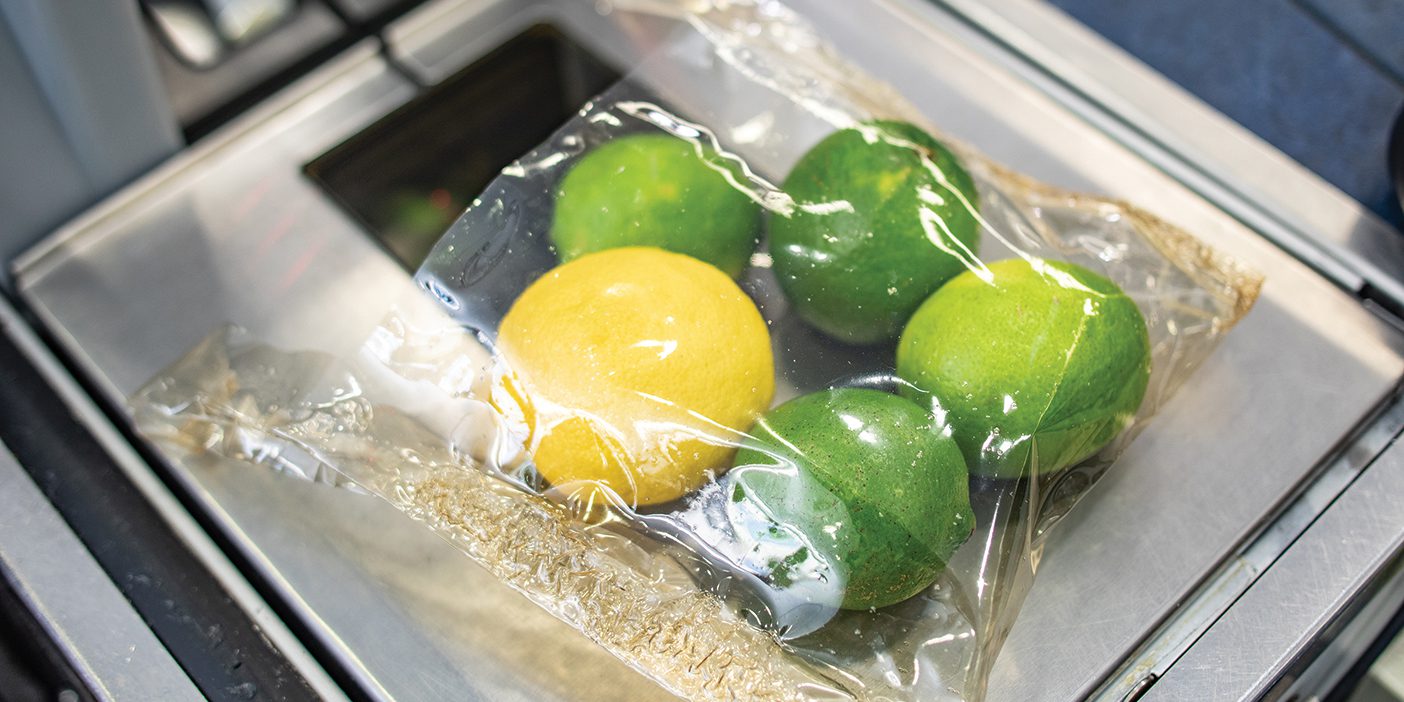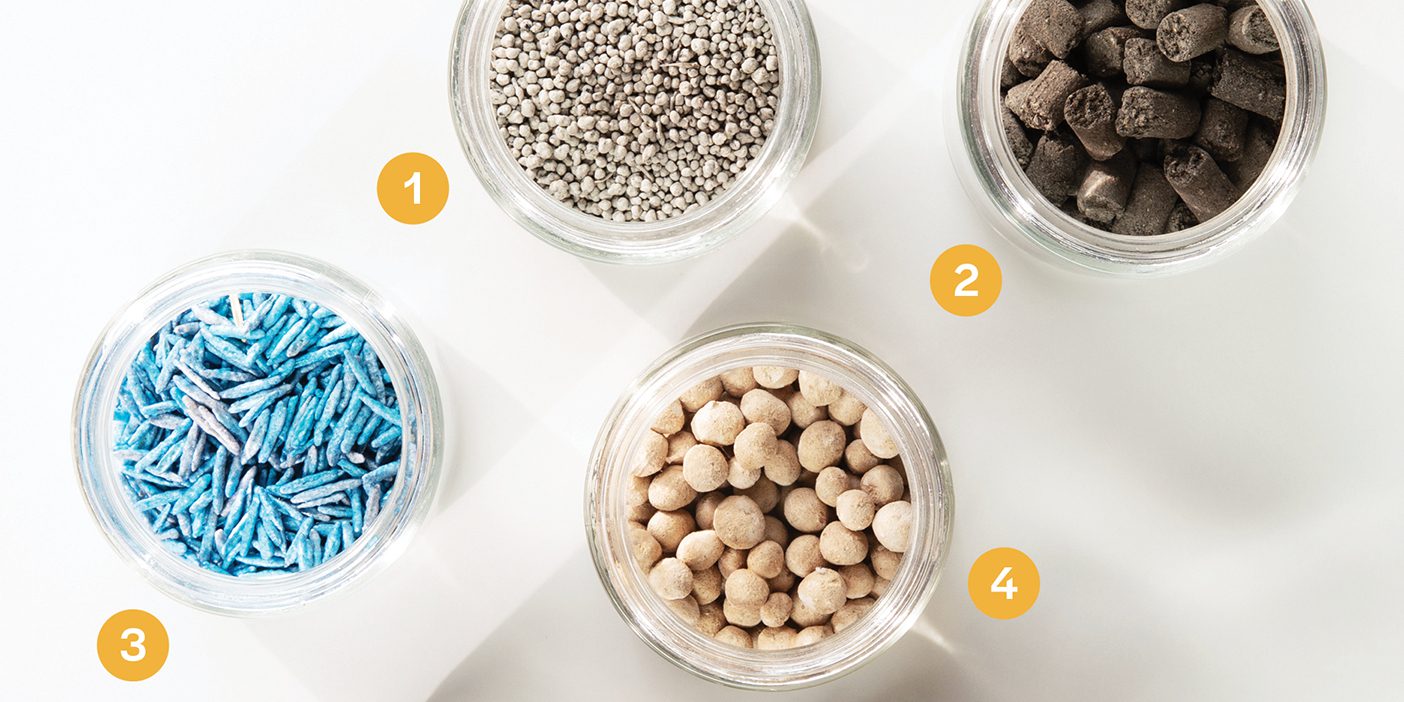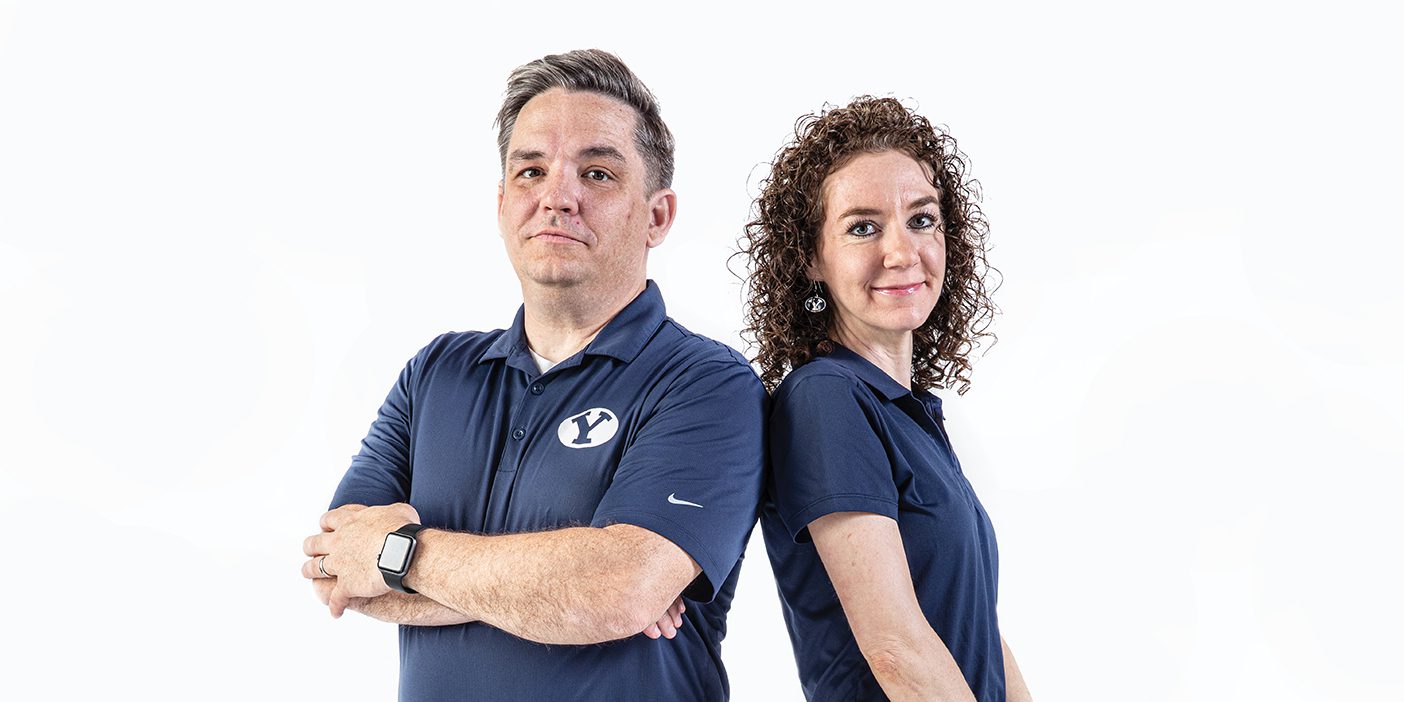
This substitute for plastic grocery bags biodegrades in five days, dissolves in water in 60 seconds, and—its BYU student creators hope—may help solve the world’s plastic problem.
The new BYU student startup Neptune makes its plastic alternative—chitosan film—from the stuff of shrimp and fungi. The key ingredient: chitin, a natural polymer found in the cell walls of mushrooms and in the exoskeletons of shellfish.
The Neptune team took first (and was named crowd favorite) at BYU’s New Venture Challenge and second in the BYU Student Innovator of the Year Competition, with winnings totaling $10,000.
“[Plastic pollution] seemed like something that people should have a decent solution for by now,” says economics major Marx X. Acosta-Rubio (’21), who cofounded the business with his childhood friend Grant P. Christensen (’19), a finance major. They recruited chemical engineering major Harry “Hal” O. Jones (’19), who brought two years of research experience with biodegradable plastics in medical applications and created the prototype.
“Made it in the kitchen,” says Jones. The aroma of shellfish and boiled vinegar filled his apartment. “That was pretty smelly. We just left all the windows open.”
Chitin supply is “pretty much endless,” Jones says. “It’s abundant in nature.” The shrimp shells they use, he points out, would normally just go to landfills.
Chitin is also economical. A typical fossil-fuel-derived bag costs about a penny to make; most biodegradable alternatives cost 8 to 10 cents. Neptune’s chitin bags cost 1.2 cents.
And disposal? To dissolve, chitin-based material needs only to be submerged in water and agitated for 60 seconds or left in moist soil for five days. Rain and humidity pose no threat. And when it does dissolve, chitosan film doesn’t degrade into smaller parts like plastics and current plastic alternatives do. These plastic pieces “stay in the environment and are eaten by little critters,” says Christensen, working their way up the food chain to bigger organisms—like us. Chitin leaves no trace.
“The BYU students make their plastic alternative out of the stuff of shrimp and fungi. “
The Neptune team is not the first to create a biodegradable bag from chitosan film. “There are people working with similar technology,” says Acosta-Rubio. Early on, their own bags had a fishy smell and an orange tint, problems they resolved with chemistry. “We feel like we have figured it out, and we’re going to keep running with it.”
They also hope to use chitosan film to replace the blister-pack packaging that showcases items like toothbrushes. “Why have something that’s indestructible just to show a product?” asks Jones.












